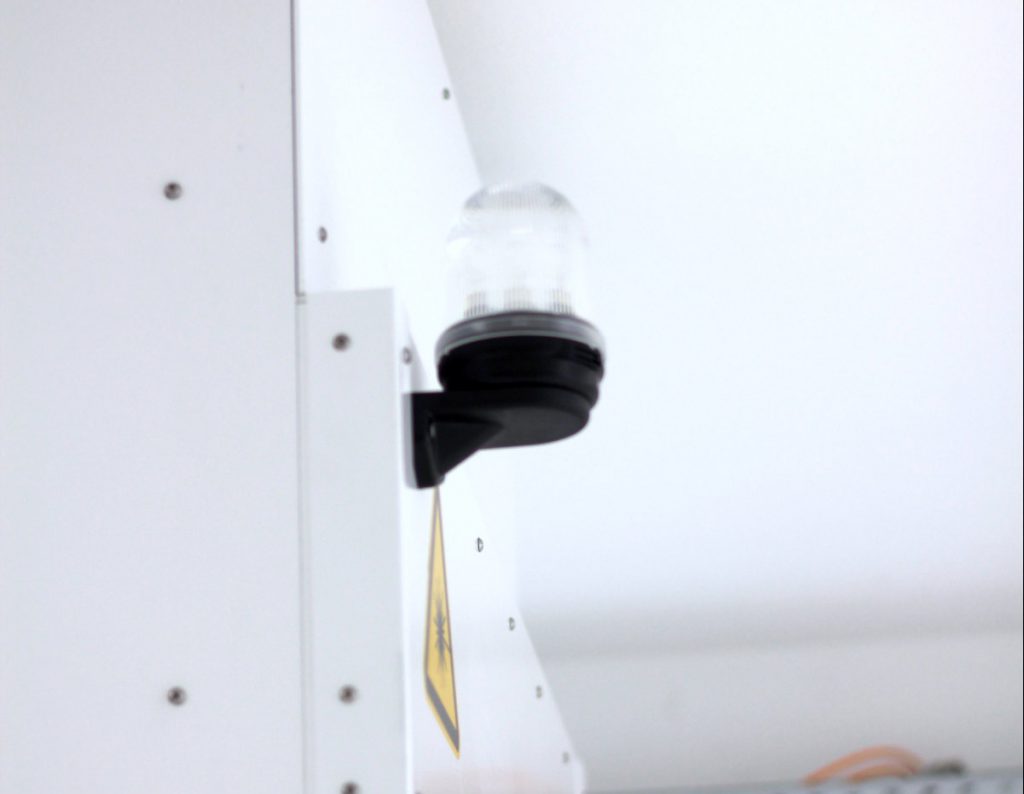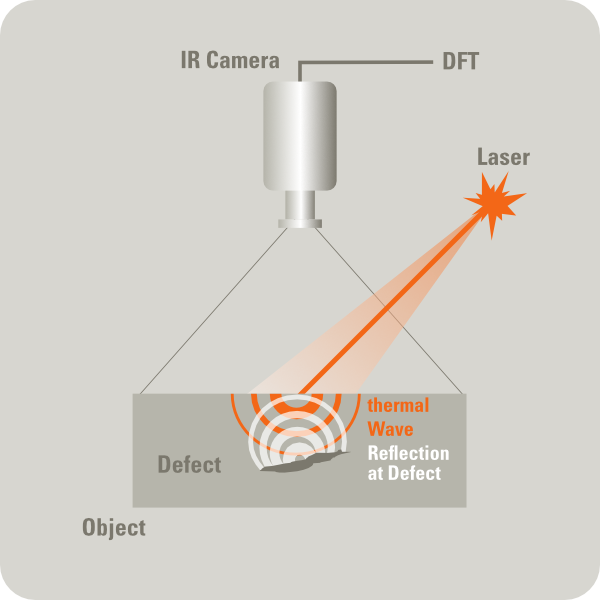Automated testing with LTvis

Automated laser weld seam inspection
The non-destructive testing of laser welds is carried out without contact using laser-excited thermography.
In the process, so-called ‘false friends’ can be unerringly identified among the weld seams, as the heat introduced by the laser with pinpoint accuracy cannot flow off or can only do so incompletely. The position of the weld seam can be automatically detected by imaging analysis with a high-resolution infrared camera, and the seam quality can be automatically evaluated with machine learning algorithms.
The inspection takes place in the production cycle and lasts only a few 100 milliseconds per inspected weld seam.
Ideally, the test takes place stationary (i.e. with the test objects at rest), but can also be carried out in continuous motion if necessary.

Laser-excited thermography
The laser thermography method is based on heat flow analysis.
The surface of the examined object is heated periodically or in pulses with laser light. The resulting heat flow into the material is altered by thermal obstacles such as pores, detachments or material thickness variations of the object. As a result, thermal signatures form on the surface, which are captured by imaging with an infrared camera. The sensitivity of the method is very high due to the use of Fourier analysis. The evaluation is not only carried out on a single image, but on an entire image sequence. From this, a phase and amplitude image is calculated by means of a Fourier transformation. In the phase image, interfering effects resulting from different emission coefficients or inhomogeneous excitation are significantly reduced. The statement about the interface state and/or the material thickness or the coating thickness is now possible.